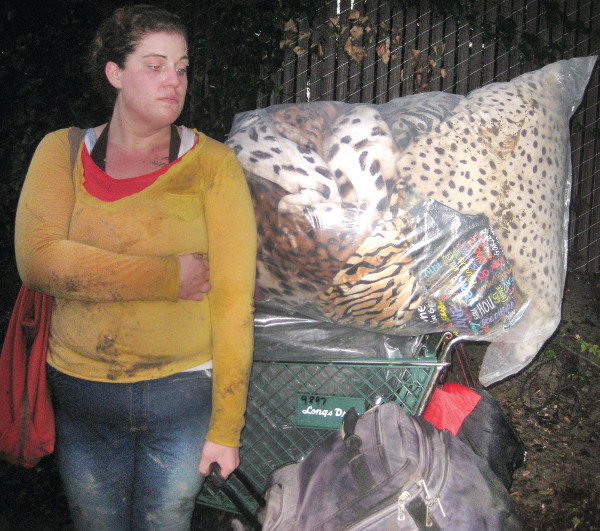
PHOTO/SANDY PERRY
SAN JOSE, CA — On October 2, members of H.O.M.E.L.E.S.S., Affordable Housing Network, Silicon Valley DeBug, Western Regional Advocacy Project, San Jose State University, and many others came together to view the premiere of “Exodus from the Jungle”. Filmed in December 2014, the documentary is about the dismantling of what was at one time considered the largest homeless encampment in the United States. The entire floor level of the 500-seat theatre was filled with a vast cross-section of the community, there to see an honest accounting of what local advocates call “a travesty upon human dignity given the vast amount of wealth in this region.”
The mood was upbeat as people got to know one another, but turned somber within the first two minutes of the film, which followed what happened to residents forced to leave their encampment, many with no other place to go. The film showed police setting up barricades to control onlookers and traffic, followed by crews mercilessly demolishing the various living quarters of the former residents: a community consisting mostly of tents, a few plywood-walled structures, one “micro-home” type dwelling (wallpapered in Christmas wrapping paper for the holidays), and even a treehouse. As their belongings were destroyed and loaded into garbage trucks, the film captured the despondent and dejected residents feverishly scrambling to move whatever they could carry so as not to be discarded by work crews.
Residents were also interviewed later as they tried, with the aid of advocates, to regroup and find a new place to stay. While visibly shaken and highly irate, the trait that came across clearly and repeatedly as the interviewees spoke is resilience. While these human beings had been stripped of their possessions, they were not ready to surrender their dignity or be swept quietly under the rug by a process that offered very few immediate solutions.
As the film wound down, many in the audience were visible shaken as well. At the end there was a question and answer session with a five-person panel including the film’s producer and advocates and residents from the Jungle who were displaced that day (some still homeless). They fielded questions from the audience and explained what we as a community can do to advocate for better solutions to the help the Homeless Community. They mentioned lobbying local leaders to build more low-income housing, preserving what low-income housing stock there is, and independent monitoring of the camp “abatement” process. They called for those same leaders to provide safe, sanitary and secure places for those rough sleeping to stay for as long as no low-income housing is provided. What becomes very clear after watching this video is that everyone’s voice is needed to persuade our leaders to consider every option available, conventional or unorthodox, in order to provide for our most vulnerable Sisters and Brothers.
